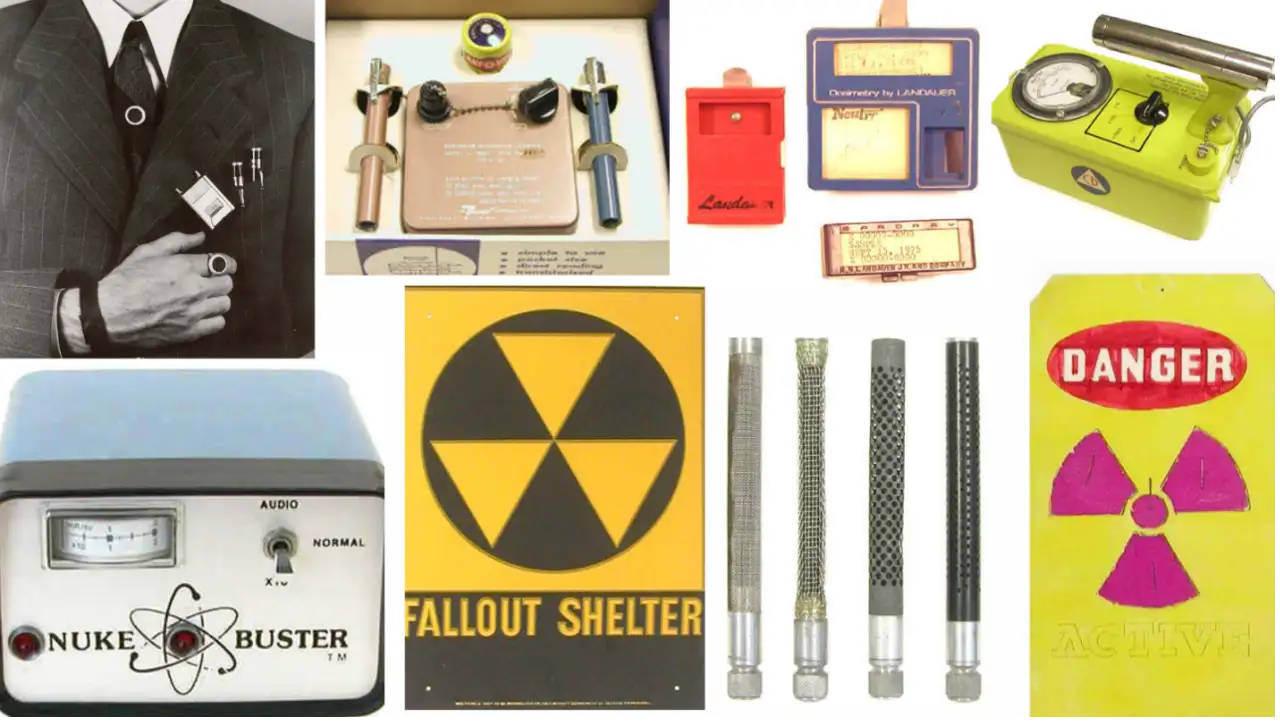In the ORAU Museum of Radiation and Radioactivity, you will find hundreds of items that chronical the history and commercialization of radiation and radioactivity. The collection includes a lot of dosimeters: film dosimeters, pocket dosimeters, thermoluminescent dosimeters, you-name-it-we-probably-got-it-dosimeters!
If you are not a health physicist or a radiation history buff, you may not even know what a dosimeter is. I wasn’t familiar with this tool either, but to write this blog, I spoke with ORAU’s subject matter expert. Retired ORAU employee, Paul Frame, Ph.D., is not only a health physicist and radiation safety trainer, he’s also the curator of our museum’s collection. He shared historical tidbits and facts about dosimeters that are fascinating (history buff, or not). Plus, he shared some of his favorite items. So, let’s take a look at what these gadgets do and how they’ve been used through the years.
What is a dosimeter?
To start, a dosimeter (pronounced dō sim eter) is an instrument used to measure an individual’s exposure to ionizing radiation over time. Ionizing radiation can take the form of electromagnetic waves like X-rays and gamma rays or particles like beta particles.
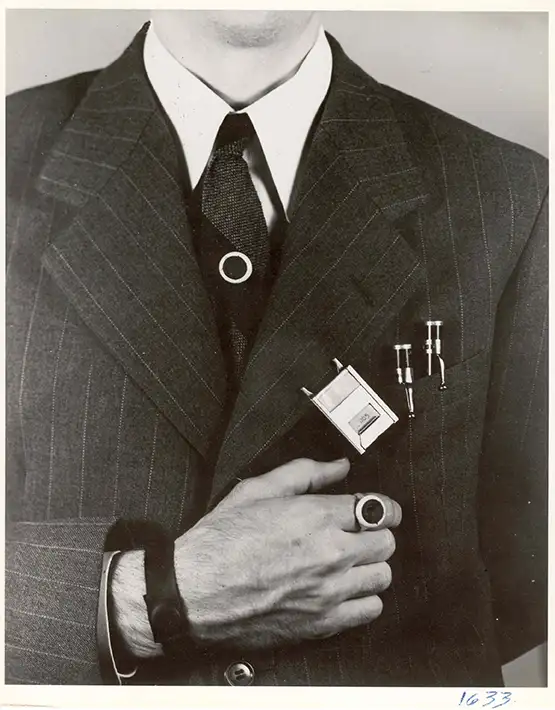
See this picture and more in ORAU’s online Museum of Radiation and Radioactivity.
We’re exposed to natural sources of ionizing radiation all the time in our food, the water and air. We also encounter radiation from man-made sources like X-rays. When an individual’s radiation exposure is excessive, it can damage human tissue and the DNA in our genes.
Not long after scientists discovered X-rays in 1895 and radioactivity in 1896, it was recognized that ionizing radiation could be hazardous. Because radiation can’t be seen, smelled or tasted, they needed a way to measure the amount of radiation exposure individuals may have received. Enter: dosimeters. It took about three decades, but dosimeters were developed because scientists realized the need for this capability.
Dosimeters do not protect against radiation, but they do measure how much ionizing radiation you’ve been exposed to while wearing the device. Devices such as these provide a means to determine if an individual’s exposure has exceeded the regulatory limits.
Dosimeters are widely used to assess workers’ radiation exposure in the medical field, nuclear power plants, research facilities, etc. This picture shows a worker wearing the different types of dosimeters commonly used during the 1950s: on the tie, on the wrist (wrist badge), attached to the lapel, worn on the finger and two worn in the chest pocket (pocket dosimeters).
Over the years, many different types of dosimeters have been employed. For the purpose of this blog, we will limit this discussion to a few common examples.
Film
In the early 1900s, film dosimetry was one of the early methods they developed—pun intended, thanks for the joke, Dr. Frame!—to evaluate ionizing radiation exposure. When photographic film is exposed to ionizing radiation like x-rays, gamma rays or beta particles, the film is darkened. The degree of darkening reflects the magnitude of the exposure. At first, scientists would judge the degree of darkening by eyeballing the developed film. Another approach was to hold developed film against a newspaper. If the newspaper could be read through the film, the exposure was low enough to be acceptable because higher radiation would cloud the film so that words behind the film would be distorted. It wasn’t sophisticated.
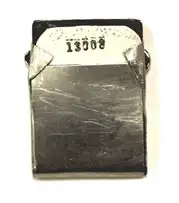
Carl Braestrup developed these badges for use in the New York City hospital system in the 1930s. These can be viewed in our online collection.
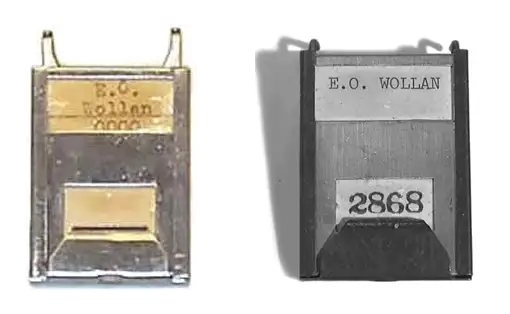
These 1940-1950s-era film badges were originally used by Ernest Wollan during the Manhattan Project at the Clinton Laboratories in Oak Ridge.
In the 1950s, it became more common to assess the darkening of the film using a tool called a densitometer (which is basically a light source aimed at a photoelectric cell).
Film dosimeters like these badges did improve and were used into the 1980s, when several other methods became popular.
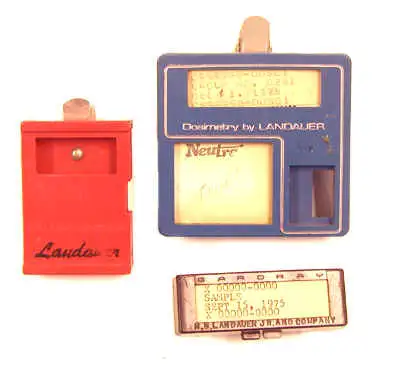
These badges date from the 1960-70s. They can be viewed in ORAU’s online Museum of Radiation and Radioactivity.
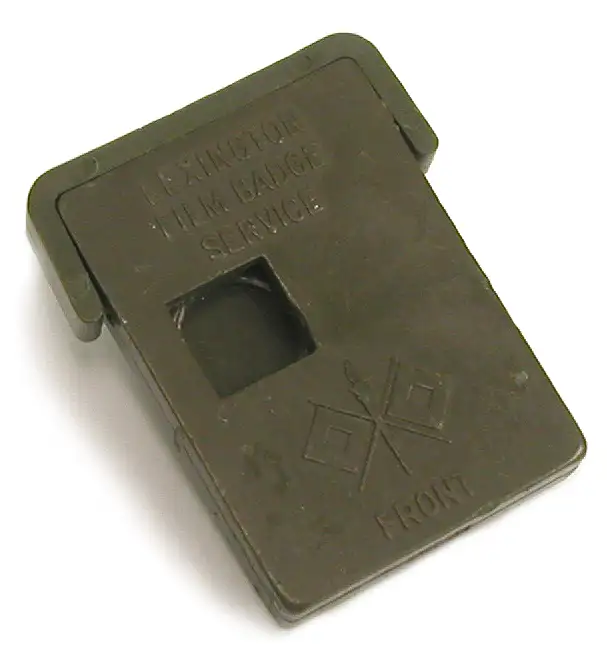
This is an example of the film badge that was used by the United States Army from the 1950s through the early 1980s. It’s included in ORAU’s Museum of Radiation and Radioactivity.
Pocket dosimeters
Pocket dosimeters, about the size of a fountain pen, were usually worn in a chest pocket. They were used to measure a worker’s radiation exposure usually over an eight-hour work shift. Prior to World War II, pocket dosimeters saw limited use. It was the Manhattan Project that created a huge demand for this product. Suddenly, they were worn by almost everyone who might be exposed to radiation. Workers could determine their exposure at any time.
There were two basic types: direct- and indirect-reading pocket dosimeters.
With the direct-reading pocket dosimeter, the wearer would look through one end and the radiation exposure, usually in millirems, was read off a scale that became visible when the other end of the dosimeter was pointed toward a light source.
A separate dosimeter reader was required to view the scale when employing an indirect dosimeter.

This is a Model K-700 indirect-reading pocket chamber manufactured by the Kelley-Koett Manufacturing Company of Covington Kentucky. View this and more in ORAU’s online Museum of Radiation and Radioactivity.
The oldest pocket dosimeter in the world
This choice item, the oldest known pocket dosimeter in existence, was invented and hand-built by Charles Lauritsen in 1932 at the California Institute of Technology.

This direct reading pocket dosimeter was hand-built by Charlie Lauritsen in 1932. Lauritsen gave it to Robley Evans who was one of Robert Millikan's graduate students at Caltech at that time. Dr. Evans donated it to the ORAU collection. Learn more by visiting ORAU’s online Museum of Radiation and Radioactivity.
Dosimeters for the public
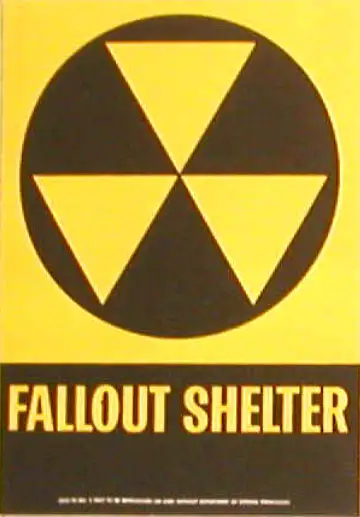
Fallout shelter sign design
Civilian use of dosimeters wasn’t a thing until the 1960s, and it happened then because the threat of nuclear war became very real (i.e., the Cuban Missile Crisis). At this point, the U.S. government spent a lot of resources on fallout shelters. Read more about the plan to save the public from nuclear fallout.
During this time, dosimeter kits (like the one pictured below) were manufactured and marketed directly to the public. The problem was that few members of the public know how to interpret the readings.
After the atomic bomb ended WWII, American pop culture became saturated with radiation products. From movies to toothpaste, everyone wanted to get in on their market share of nuclear promotion.
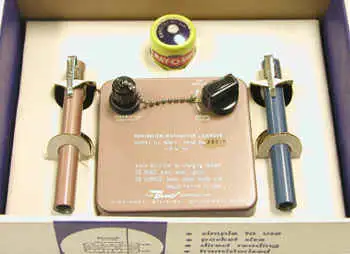
See this Family Radiation Measurement Kit in ORAU’s online Museum of Radiation and Radioactivity.
TLDs and OSLs
Certain crystals (example: lithium fluoride) absorb radiation energy and if stimulated properly, they emit that stored energy as light. The intensity of the light reflects the radiation exposure. Thermoluminescent dosimeters (TLDs) are stimulated to emit the light by heating the crystals. Optically stimulated luminescent dosimeters (OSLs or OSLDs) are induced to emit the trapped energy by exposure to light of a specific wavelength (example: ca. 500 nm).
A shared advantage, TLDs and OSLs are reusable—unlike film dosimeters.
Electronic dosimeters
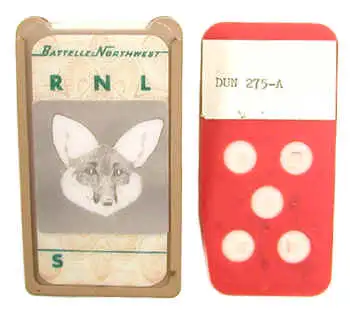
This is an early 1970s prototype of what was known as Hanford's "multipurpose" TLD dosimeter. Learn more in ORAU’s online Museum of Radiation and Radioactivity.
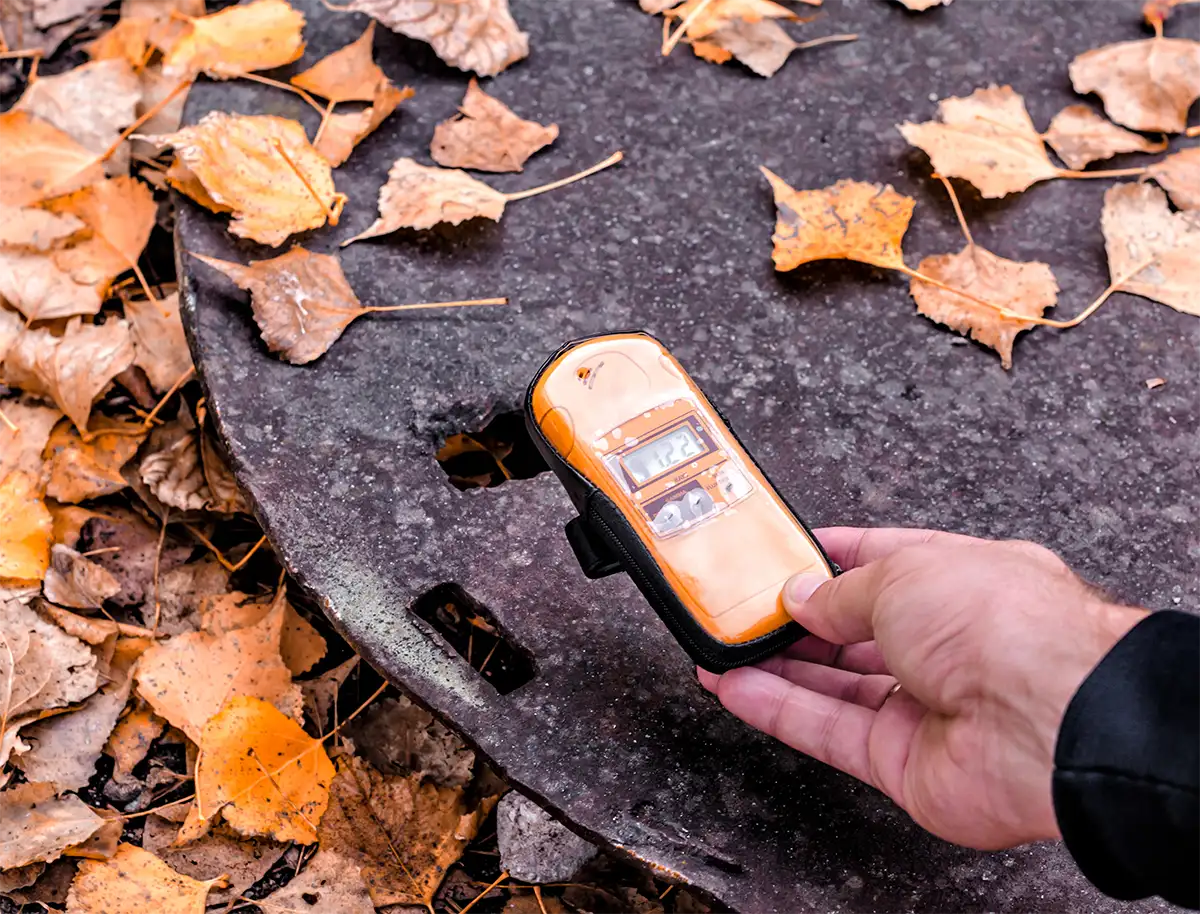
This picture shows an electronic dosimeter device checking a radioactive object after Chernobyl. This item is not included in our collection.
Digital dosimeters take advantage of modern electronics. They can measure the instantaneous intensity of the radiation as well as the exposure. Furthermore, the dosimeter output can be monitored remotely. Most commonly used in nuclear power plants and medical facilities, they have not yet replaced other types of dosimeters. They are expensive and not always accepted for use when demonstrating compliance with regulatory exposure limits.
I also want to add a note about Geiger counters, which measure the current radiation dose whereas dosimeters sum up the radiation dose over time. So, Geiger counters detect radiation rather than provide you with information about the radiation dose amount.
Hippies, a commune and Nuke Busters
Okay, this item is not a dosimeter. But it is cool.
In 1971, about 300 hippies settled into a commune they named “The Farm” in southern Middle Tennessee. Known for their non-violent preferences, one source of income for “The Farm” became a company that sold radiation alert instruments. Dr. Frame’s favorite is their “Nuke Buster,” which is a portable detector that plugged into the cigarette lighter socket of a car.
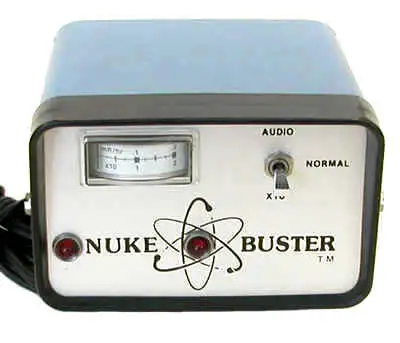
This item is a part of ORAU’s Museum of Radiation and Radioactivity thanks to the donation from S.E. International courtesy of Steve Skinner.
Someone who lived on the commune came to a training course Dr. Frame led, and the participant ended up donating a Nuke Buster to the ORAU Museum of Radiation and Radioactivity.
Though we covered a lot of ground, this blog is not exhaustive on the topic of measuring radiation exposure. For more information about all of these items, check out the ORAU Museum of Radiation and Radioactivity online directory.
